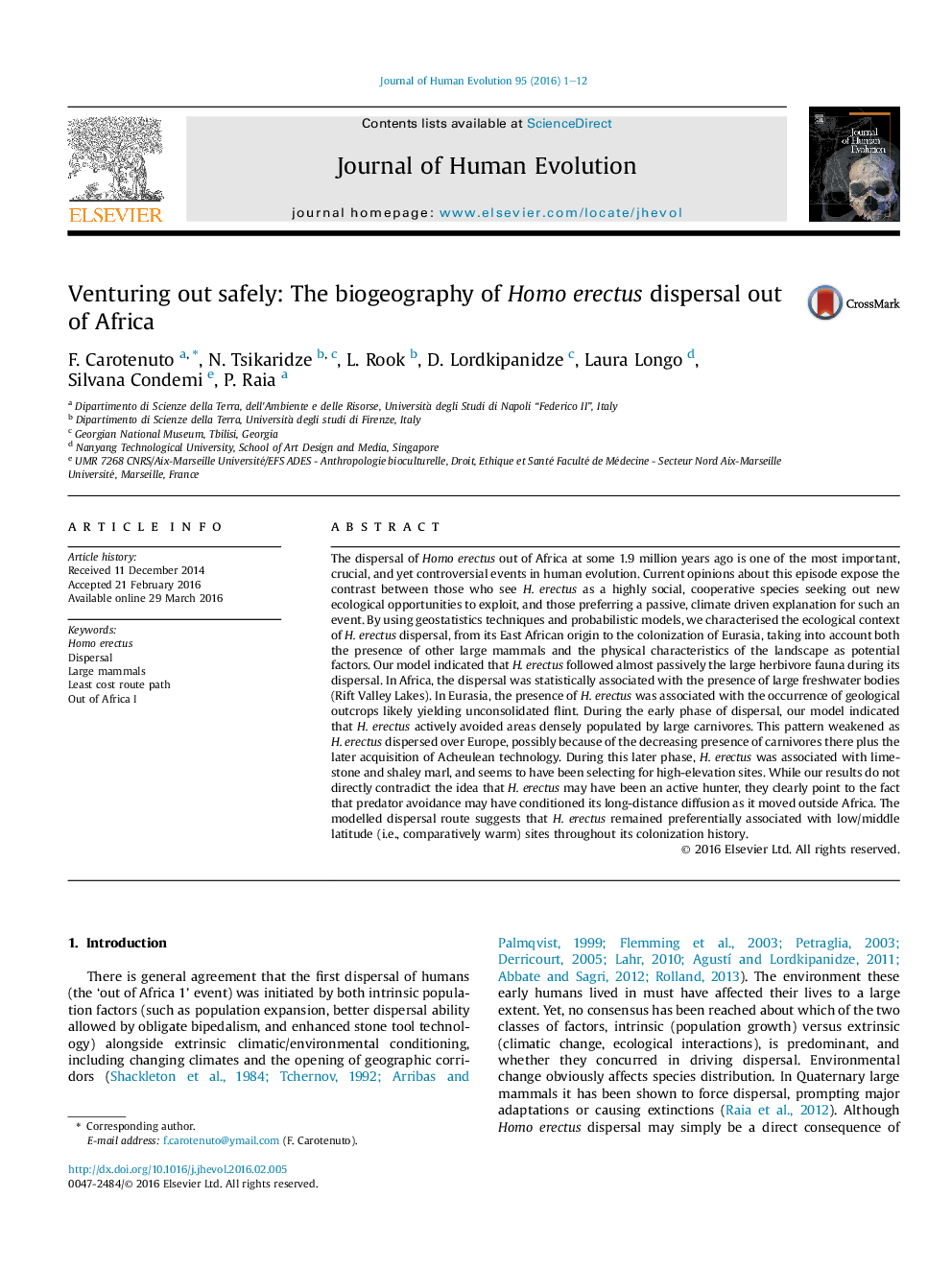| کد مقاله | کد نشریه | سال انتشار | مقاله انگلیسی | نسخه تمام متن |
|---|---|---|---|---|
| 4555789 | 1628154 | 2016 | 12 صفحه PDF | دانلود رایگان |

The dispersal of Homo erectus out of Africa at some 1.9 million years ago is one of the most important, crucial, and yet controversial events in human evolution. Current opinions about this episode expose the contrast between those who see H. erectus as a highly social, cooperative species seeking out new ecological opportunities to exploit, and those preferring a passive, climate driven explanation for such an event. By using geostatistics techniques and probabilistic models, we characterised the ecological context of H. erectus dispersal, from its East African origin to the colonization of Eurasia, taking into account both the presence of other large mammals and the physical characteristics of the landscape as potential factors. Our model indicated that H. erectus followed almost passively the large herbivore fauna during its dispersal. In Africa, the dispersal was statistically associated with the presence of large freshwater bodies (Rift Valley Lakes). In Eurasia, the presence of H. erectus was associated with the occurrence of geological outcrops likely yielding unconsolidated flint. During the early phase of dispersal, our model indicated that H. erectus actively avoided areas densely populated by large carnivores. This pattern weakened as H. erectus dispersed over Europe, possibly because of the decreasing presence of carnivores there plus the later acquisition of Acheulean technology. During this later phase, H. erectus was associated with limestone and shaley marl, and seems to have been selecting for high-elevation sites. While our results do not directly contradict the idea that H. erectus may have been an active hunter, they clearly point to the fact that predator avoidance may have conditioned its long-distance diffusion as it moved outside Africa. The modelled dispersal route suggests that H. erectus remained preferentially associated with low/middle latitude (i.e., comparatively warm) sites throughout its colonization history.
Journal: Journal of Human Evolution - Volume 95, June 2016, Pages 1–12